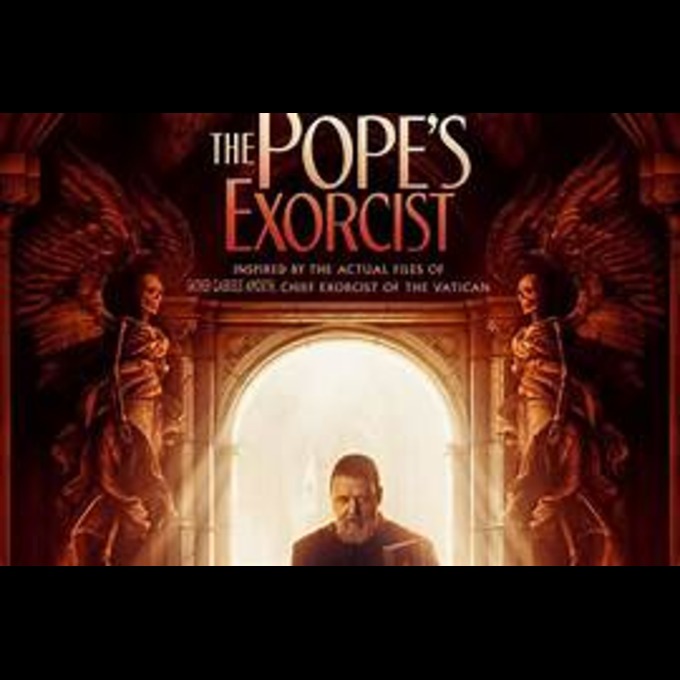Table of Contents
Cast and Crew of
Main Cast:
- Russell Crowe as Father Gabriele Amorth
- Alex Essoe as Julia Vasquez
- Daniel Zovatto as Father Esquibel
- Franco Nero as Pope John Paul II
- Peter DeSouza-Feighoney as Henry Vasquez
- Laurel Marsden as Amy Vasquez
- Cornell John as Bishop Lumumba
- Ryan O’Grady as Cardinal Sullivan
Supporting Cast:
- Bianca Bardoe as Rosaria
- Santi Bayón as Roberto Vasquez IV (Henry’s Dad)
- Paloma Bloyd as Interpreter
- Alessandro Gruttadauria as Father Gianni
- River Hawkins as Enzo / Halphas
- Jordi Collet as Carlos
- Carrie Munro as Adella
- Marc Velasco as Worker 1
- Edward Harper-Jones as Young Amorth
- Matthew Sim as Doctor
- Victor Solé as Spanish Doctor
- Tom Bonington as Bartender
- Andrea Dugoni as Drunken Farmer
- Ed White as Man at Funeral
- Laila Barwick as Daughter (Farmhouse)
- Gennaro Diana as Priest at Funeral
- Pablo Raybould as Bishop Barbuto
- Ralph Ineson as Voice of Asmodeus
- Derek Carroll as Vatican Guard
- Ella Cannon as Partisan 2 (uncredited)
Crew:
- Director: Julius Avery
- Writer: Michael Petroni
- Producer: Evan Spiliotopoulos
- Cinematographer: Khalid Mohtaseb
- Editor: Martín Hernández
- Composer: Jed Kurzel
- Production Designer: Daniel Dorr
- Costume Designer: Gabriella Pescucci
- Special Effects Supervisor: Rolf te Booij
The Plot of the The Pope’s Exorcist (2023)
A Gripping Exploration of Faith, Fear, and the Demonic Underbelly of the Church Released in 2023, “The Pope’s Exorcist” transcends the genre of horror, offering a compelling blend of theological contemplation, historical intrigue, and visceral thrills. Set against the backdrop of 1987 Rome, the film delves into the life of Father Gabriele Amorth, the Vatican’s chief exorcist, a man whose unwavering faith clashes with a pragmatism that borders on recklessness.
Russell Crowe delivers a masterful performance as Amorth, capturing the priest’s unwavering dedication to the church alongside a simmering internal conflict fueled by past failures and personal demons. His unorthodox methods, which often involve shotguns as readily as rosaries, draw both admiration and suspicion from the entrenched bureaucracy within the Vatican.
Also read: Madame Web (2024): A New Superheroine Takes the Stage
When Amorth is called to investigate the possession of a young boy in a remote Spanish village, he finds himself drawn into a labyrinthine web of secrets. The boy, Henry, is tormented by the malevolent entity Asmodeus, a force seemingly familiar with the church’s darkest past.
As Amorth attempts to exorcise the demon, the film masterfully weaves family dynamics into the narrative, exposing the vulnerabilities and resentments that fester beneath the surface of seemingly ordinary lives.
The investigation quickly takes a sinister turn as Amorth uncovers a centuries-old conspiracy, tracing Asmodeus’s presence back to a possessed exorcist during the Spanish Inquisition. This discovery plunges the film into the realm of historical intrigue, raising questions about institutional corruption and the enduring legacy of evil within the church’s hallowed halls.
Cardinal Sullivan, a power-hungry figure within the Vatican, views Amorth’s investigation as a threat to his own ambitions and seeks to discredit him at every turn. This internal conflict adds a layer of political complexity to the narrative, highlighting the potential for ambition to eclipse even the most sacred of callings.
The film’s climax descends into the subterranean depths of the Vasquez family’s ancient abbey, where Amorth confronts Asmodeus in a final showdown. The visceral clash of faith and fury pushes the boundaries of horror, culminating in a heart-wrenching sacrifice that forces viewers to contemplate the true cost of battling evil.
“The Pope’s Exorcist” is not merely a horror film; it is a profoundly unsettling examination of the human condition. The film explores the depths of faith and doubt, the struggle for redemption against a backdrop of institutional corruption, and the enduring scars left by past transgressions. Ultimately, it is a testament to the human spirit’s resilience in the face of unimaginable darkness.
The action sequences of the The Pope’s Exorcist (2023)
Demonic Deliverance: Unpacking the Action Sequence of “The Pope’s Exorcist” (2023)
While “The Pope’s Exorcist” isn’t primarily an action film, it does deliver some intense and memorable action sequences that punctuate the film’s exploration of faith and horror. Here’s a breakdown of the key action moments:
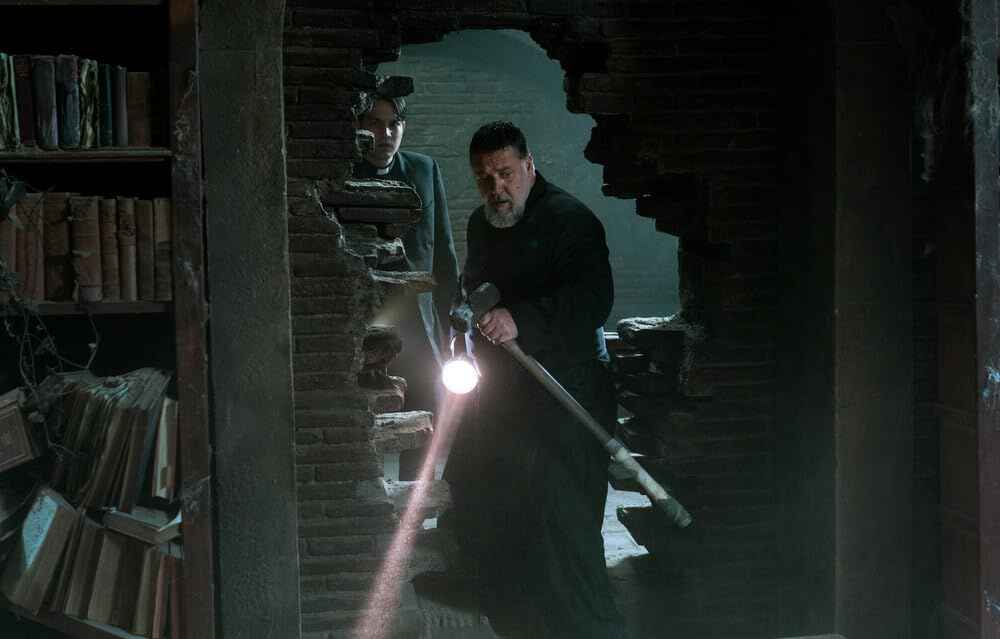
1. Demonic Outbreak: This early scene establishes the threat. Young Henry, possessed by Asmodeus, unleashes chaos in his home. Director Julius Avery takes this familiar trope and escalates it. Furniture splinters, bodies levitate, and a possessed dog attacks the family, creating a whirlwind of physical terror.
2. Exorcism Under Siege: Amorth’s first attempt at exorcising Henry in Spain is anything but textbook. Asmodeus unleashes a barrage of physical attacks, throwing crucifixes, levitating Amorth, and even manifesting within the shadows to strangle him. This sequence shows Amorth’s resourcefulness as he combines prayer and improvised weaponry to fight back.
3. Descent into Darkness: In the film’s most visually stunning sequence, Amorth descends into the labyrinthine depths of the abbey, following Asmodeus’ demonic trail. As he navigates claustrophobic tunnels and ancient chambers, grotesque apparitions and spectral echoes assault him, creating a chilling atmosphere of psychological and physical threat.
4. Confrontation in the Catacombs: This is the film’s climactic action sequence. Amorth finally confronts Asmodeus in a vast cavern beneath the abbey. The choreography is brutal and balletic, as Amorth utilizes various holy objects and improvised weapons against the demonic entity. It’s a visually striking clash of faith and fury, with fire, shadows, and bursts of energy highlighting the stakes of the battle.
Also read: Haunted Mansion 2023 movie review : A New Disney Adventure
5. Sacrificial Stand: The final act transcends physical action. Asmodeus attempts to possess the young daughter of the Vasquez family. Amorth makes a crucial choice: to sacrifice himself and become the vessel for Asmodeus, preventing the girl’s possession. This is a powerful and poignant moment, where physical action gives way to a deeper emotional and spiritual battle.
Beyond the spectacle, the action sequences in “The Pope’s Exorcist” serve several purposes:
Escalate the horror: The brutality and visual effects amplify the demonic threat, adding visceral weight to the film’s supernatural elements.
Demonstrate Amorth’s resourcefulness: The sequences showcase Amorth’s unorthodox methods and unwavering faith, making him a compelling protagonist in the battle against evil.
Explore the emotional toll: The physical struggle reflects the characters’ internal turmoil, particularly Amorth’s personal demons and the Vasquez family’s grief.
“The Pope’s Exorcist” uses action sequences sparingly but effectively, weaving them into the film’s broader themes of faith, family, and the fight against darkness. These moments are not simply adrenaline-pumping spectacles but serve to deepen the narrative’s emotional impact and explore the true cost of confronting evil.
The Character Development of the The Pope’s Exorcist (2023)
“The Pope’s Exorcist” isn’t just a battle against demonic forces; it’s a tapestry of complex characters navigating grief, faith, and the shadows of their past. Here’s a deep dive into the film’s key players and their transformative journeys:
1. Father Gabriele Amorth: Played with gravitas by Russell Crowe, Amorth is a fascinating contradiction. He’s a devout priest, wielding both the crucifix and the shotgun with unwavering conviction. He cracks jokes and rides a Vespa, yet possesses a profound understanding of human darkness.
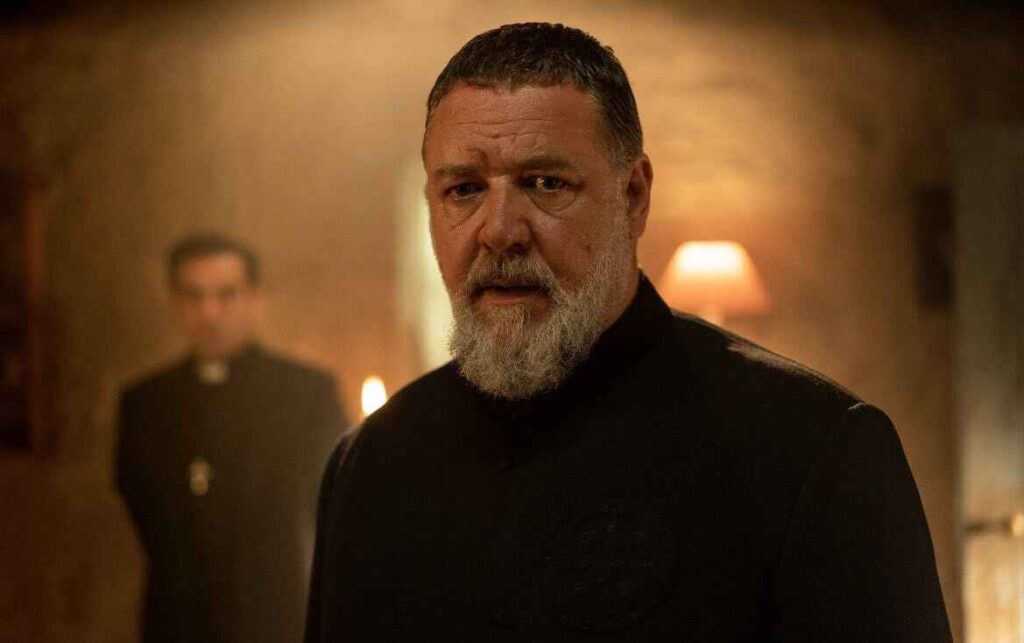
Through encounters with Henry and the secrets unearthed in the abbey, Amorth confronts his own inner demons, acknowledging the toll his vocation has taken on his soul. His sacrifice at the film’s climax is a testament to his evolving faith, shifting from a warrior against evil to a protector willing to pay the ultimate price.
2. Julia: Alex Essoe delivers a nuanced performance as Julia, the grieving mother at the center of the storm. Initially distant and haunted by tragedy, Julia’s maternal instincts resurface as she struggles to protect her children. Witnessing Amorth’s faith rekindles her own, and she plays a crucial role in the final confrontation, ultimately choosing hope over despair.
3. Henry: Young Peter DeSouza-Feighoney portrays the possessed Henry with chilling intensity. We see glimpses of the innocent boy beneath the demonic influence, highlighting the tragedy of his situation. The film avoids demonizing Henry, instead focusing on the pain and confusion he endures. His eventual liberation resonates as a hopeful victory over darkness.
4. Cardinal Sullivan: Ralph Ineson’s Cardinal Sullivan embodies the film’s internal conflict. Driven by ambition and a thirst for power, he views Amorth as threatening his political aspirations. While initially portrayed as a one-dimensional villain, Sullivan’s motivations gain depth as the film progresses. His ultimate fate offers a cautionary tale about the corrupting influence of ambition.
5. Father Esquibel: Daniel Zovatto’s Father Esquibel represents the future of the church. Initially skeptical of Amorth’s methods, Esquibel witnesses the power of faith firsthand. He evolves from a hesitant follower to a brave ally, embodying the potential for renewal within the institution.
“The Pope’s Exorcist” doesn’t offer simplistic character arcs. Each individual grapples with internal demons and external forces, shaping their choices and ultimately defining their souls. By exploring the emotional journeys of its characters, the film transcends the horror genre, resonating with audiences on a deeply human level.
The themes of the The Pope’s Exorcist (2023)
“The Pope’s Exorcist” delves into a potent cocktail of themes, weaving a chilling tapestry of faith, family, and the battle between good and evil. Here’s a closer look at its key thematic underpinnings:
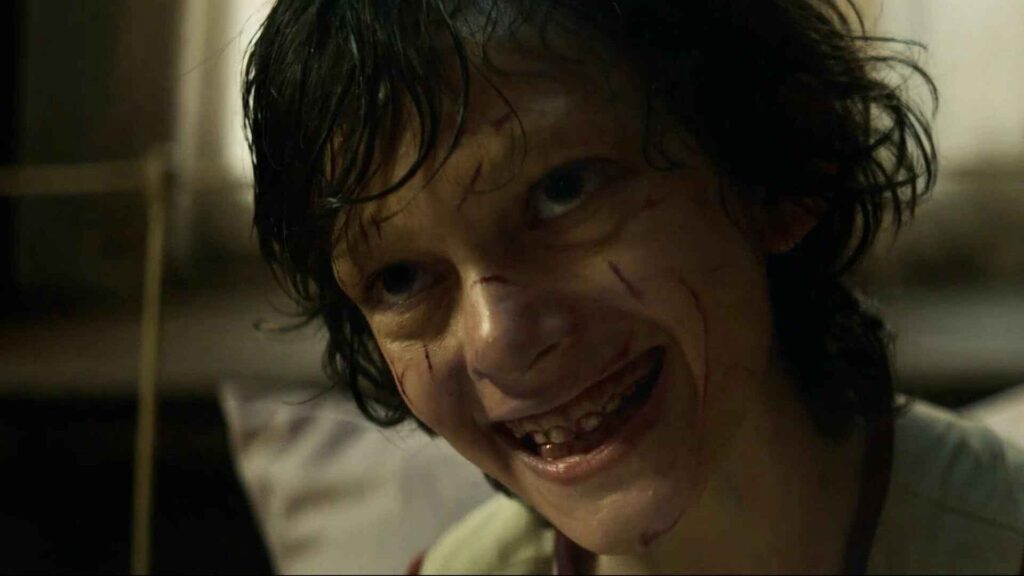
1. Faith Under Fire: The film explores the complexities of faith in the face of unimaginable darkness. Father Amorth’s unwavering conviction is tested not only by the demonic entity but also by the internal struggles and tragedies encountered throughout the narrative. The Vasquez family’s faith is shattered by grief and possession, yet ultimately finds renewal through Amorth’s unwavering belief and personal sacrifice. The film refrains from presenting definitive answers about faith, instead urging viewers to contemplate its transformative power even in the face of doubt and despair.
2. Family Bonds and Fractures: At its core, “The Pope’s Exorcist” is a poignant exploration of family dynamics. The Vasquez family is fractured by tragedy, struggling to mend broken bonds amidst the demonic crisis. Amorth’s relationship with his estranged brother offers a parallel narrative, highlighting the enduring power of familial ties even when strained by time and circumstance. The film ultimately celebrates the resilience of family love, showcasing how it can serve as a source of strength and unity in the face of adversity.
3. Confronting Inner Demons: Beyond the literal demonic possession, the film delves into the character’s internal struggles. Amorth grapples with the toll his vocation has taken on his soul, battling his own darkness alongside the external threat. Julia confronts the depths of her grief and despair, while Cardinal Sullivan wrestles with his ambition and thirst for power. Each character’s journey becomes a metaphor for confronting one’s own inner demons, highlighting the universal human struggle for self-acceptance and inner peace.
4. Corruption Within the Church: “The Pope’s Exorcist” doesn’t shy away from exploring the dark underbelly of power within the Church. Cardinal Sullivan’s political machinations and the historical sins unearthed in the abbey’s depths serve as stark reminders of human fallibility and the potential for corruption even in sacred institutions. The film compels viewers to question authority and engage in critical reflection about the Church’s role in society.
5. Sacrifice and Redemption: “The Pope’s Exorcist” ultimately presents a powerful message about the potential for sacrifice and redemption. Amorth’s selflessness in sacrificing himself to protect the Vasquez family offers a poignant exploration of selflessness and the ultimate victory of love over evil.
The film’s ambiguous ending leaves viewers pondering the consequences of his choice, prompting reflection on the enduring impact of sacrifice and the potential for redemption even in the darkest of circumstances.
By tackling these complex themes, “The Pope’s Exorcist” transcends the confines of the horror genre, offering a thought-provoking and emotionally resonant cinematic experience. It invites viewers to grapple with questions of faith, family, and the darkness within our own souls, making it a film that lingers long after the credits roll.
The direction of the The Pope’s Exorcist (2023)
Julius Avery’s direction in “The Pope’s Exorcist” strikes a careful balance between the genre’s familiar tropes and a fresh, character-driven approach. Here’s a breakdown of his key stylistic choices:

1. Atmospheric Storytelling: Avery crafts a chilling atmosphere through the masterful use of shadow and light. Oppressive interiors and claustrophobic tunnels contrast with sun-drenched Spanish landscapes, highlighting the film’s thematic duality of light and darkness. He utilizes slow-burn tension punctuated by bursts of visceral horror, keeping viewers on the edge of their seats.
2. Blending Genres: While grounded in the horror genre, the film seamlessly blends elements of thriller, historical drama, and family tragedy. This genre-bending approach keeps the narrative fresh and unpredictable, preventing it from falling into cliches. Avery successfully avoids relying on jump scares, instead building suspense through psychological dread and a creeping sense of unease.
3. Character-Driven Camera Work: The camera often lingers on the faces of the characters, capturing their emotional nuances and internal struggles. Close-ups during exorcism scenes amplify the horror, while wider shots during family interactions showcase the vulnerability and resilience of the human spirit. This focus on character intimacy draws viewers deeper into the story and fosters empathy for the protagonists.
4. Symbolic Imagery: Avery employs subtle visual metaphors to enrich the film’s thematic tapestry. The use of crucifixes and mirrors reflects the struggle between good and evil, while the labyrinthine architecture of the abbey symbolizes the characters’ descent into darkness and their eventual quest for redemption. These visual cues elevate the narrative beyond the surface level, inviting viewers to engage in a deeper analysis of the film’s symbolism.
5. Contrasting Pace: The film masterfully balances moments of slow-burning tension with bursts of frenetic action. The exorcism scenes unfold with raw physicality and visceral energy, while quieter moments allow for character development and reflection. This variation in pacing keeps the narrative engaging and prevents the film from becoming monotonous.
Julius Avery’s direction in “The Pope’s Exorcist” is a testament to his ability to blend genre conventions with character-driven storytelling. He crafts a captivating and unsettling cinematic experience, immersing viewers in a world where faith, family, and the battle against darkness intertwine.
The cinematography of the The Pope’s Exorcist (2023)
1. Light and Shadow: Darkness and light are central figures in the film’s visual language. Cinematographer Luis San Segundo masterfully utilizes shadows to evoke a sense of dread and uncertainty, often obscuring faces and figures to heighten the fear of the unknown. Conversely, moments of faith and hope are bathed in warm light, creating a stark contrast to the demonic darkness. This interplay of light and shadow reflects the film’s central themes of good versus evil, faith versus doubt, and the ever-present battle between the sacred and the profane.
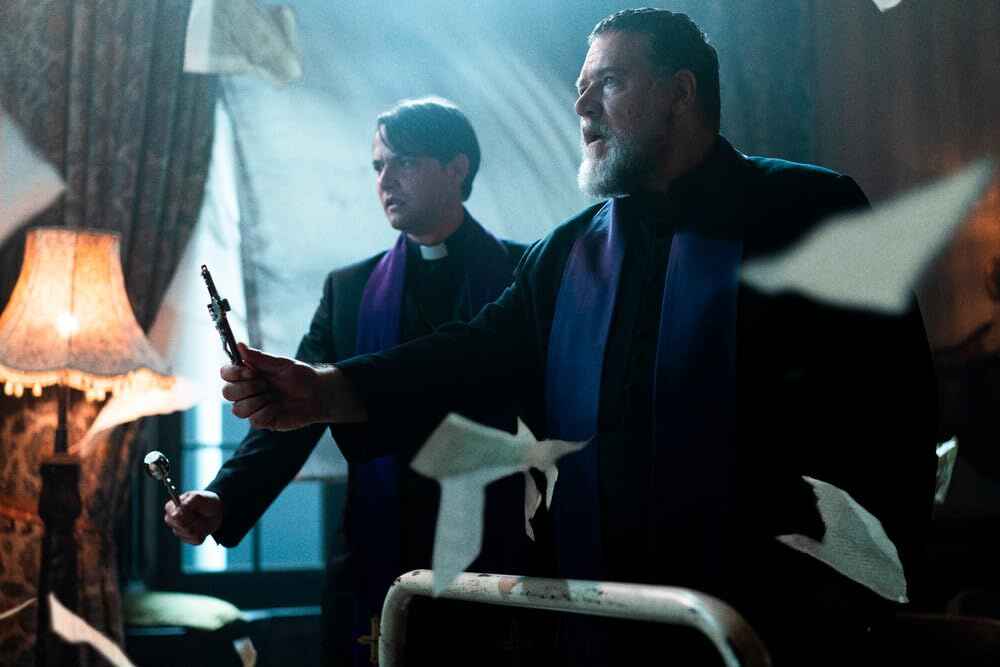
2. Contrasting Locations: The film shifts between sun-drenched Spanish landscapes and the oppressive, cavernous depths of the abbey. The wide-open shots of the Spanish countryside establish a sense of normalcy and fleeting peace, before plunging viewers into the abbey’s claustrophobic tunnels and labyrinthine chambers. This visual contrast amplifies the horror as the characters descend into the darkness, both literally and figuratively.
3. Intimate Framing: San Segundo employs close-ups and tight framings extensively, especially during exorcism scenes. This technique draws viewers into the character’s emotional and physical experiences, intensifying the terror and discomfort. The camera lingers on Amorth’s determined gaze, Julia’s tear-streaked face, and Henry’s contorted features, blurring the line between observer and participant, further immersing us in the unfolding horror.
4. Unsteady Cam and Shifting Focus: During moments of heightened tension and demonic possession, the camerawork becomes erratic, employing shaky close-ups and rapid cuts. This stylistic choice reflects the characters’ disorientation and terror, mirroring the internal chaos unleashed by the demonic presence. Similarly, blurred close-ups of religious iconography during exorcisms suggest the conflict between the sacred and the unholy, hinting at the vulnerability of even the most powerful symbols of faith.
5. Symbolism and Colour Palette: The film employs muted tones and a subdued color palette, with bursts of vibrant red used sparingly to emphasize moments of violence, sacrifice, and revelation. This color palette reinforces the film’s dark and gritty atmosphere, while the strategic use of red adds a layer of visual symbolism, highlighting the presence of evil and the potential for bloodshed.
Overall, the cinematography of “The Pope’s Exorcist” is more than just visually captivating; it serves as a narrative tool, enhancing the film’s thematic resonance and emotional impact. San Segundo’s skillful use of light, shadow, and camera movement immerses viewers in the characters’ struggles, making them complicit in the battle against darkness, ultimately elevating the film from a mere horror story to a profound exploration of faith, family, and the human condition in the face of unimaginable evil.
